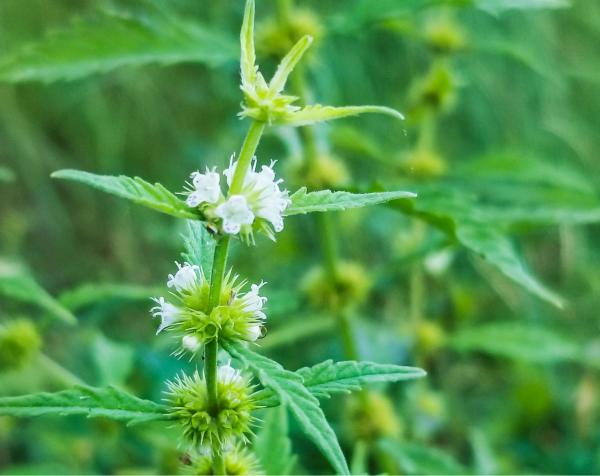
Bugleweed is a shrubby, green plant with dainty white flowers that looks a lot like a common garden weed. It is a part of the mint family and was used to dye fabrics by the Egyptians. The leaves and flowers hold its medicinal properties that were used traditionally in Northern America, Europe, and some parts of Asia.
Bugleweed was traditionally used for treating cardiovascular conditions such as cardiac dilation, irregularity and palpitations. Along with this, it is also used to treat haemorrhages, intestinal bleeding, insomnia, and anxiety.
Some of Bugleweeds actions include:
- Anti-thyroid, thyrostatic
- Antitussive
- Sedative
- Cardio tonic
- Astringent
Due to its traditional use in treating palpitations, tachycardia (rapid heart beat), insomnia, and wakefulness, Bugleweed creates a great picture in treating hyperthyroidism. Hyperthyroidism is diagnosed when the thyroid gland becomes overactive and produces too much hormone. The hyperthyroid symptoms most commonly developed in women include nervousness, irritability, fatigue, muscle weakness, shakiness, weight loss, diarrhoea, and irregular heartbeat.
The organic acids that Bugleweed contains provide its main anti-thyroid actions. This means that it suppresses thyroid function and inhibits Thyroid Stimulating Hormone (TSH) to bind to its receptor. This then inhibits the overstimulation of thyroid hormones. Studies have also shown that Bugleweed may decrease other thyroid hormone levels (such as T3, T4, and Luteinising Hormone), which can prevent further thyroid related illness from occuring, such as Grave’s Disease.
With its strong anti-thyroid actions that suppress hormone production and function, it is cautioned in Hypothyroidism (where the thyroid gland does not produce enough hormones), pregnancy, and breastfeeding.
Give us a call to speak with one of our amazing Naturopaths about a Hyperthyroid treatment protocol and introducing Bugleweed into to your life!

